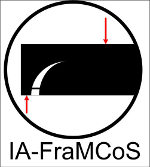|
|
|
Mini Symposia > MS10 : Nuclear vessel behaviour under extreme loadingMS10: Nuclear vessel behaviour under extreme loading Organiser: F. Dufour (frederic.dufour@grenoble-inp.fr) Nuclear vessels vulnerability against extreme loading is a key issue in our modern society to produce energy safely. Indeed, in case of a major accident, the impact on humans, environment and economy is so high that the probability of failure must be as low as possible. Besides, the extreme loading may be internal pressure and high temperature, external impact on the structure or ground shaking due to earthquake. In any case, their characterization is rather uncertain and many scenarii must be addressed. This brings several scientific issues which must be discussed yet during this mini symposium. Particularly but not restricted to three themes are proposed in this minisymposium, size effects; coupling between damage and permeability; time dependent behaviours. As for dams and large bridges, due the size of the structure itself and the construction duration the mechanical behaviour at failure highlights both statistical and deterministic size effects which is still a topic under discussion. Furthermore, the size of the numerical models in terms of number of degrees of freedom yields large computational time which must be reduced by different possible multiscale methods for instance, especially if (semi)probabilistic approaches are desired. In some cases, the concrete nuclear vessel is part of the confinement system which in return must ensure a minimum level of leakage rate, even under extreme loading. Therefore, not only the mechanical behaviour but also the permeability of the material must be addressed. If the permeability of concrete in dry or saturated conditions is rather well understood and modelled, the effect of partial saturation, vaporization and condensation of water in a porous and/or cracked media is a hot topic which must be assessed in a multiscale approach based on experimental, theoretical and numerical contributions. A third characteristic of nuclear vessels is the prestressing and the duration of the service life which is under discussion worldwide to be extended to 60 or even 80 years. Thus, the time dependency of material behaviour must also be accounted for (steel relaxation of prestressing cables and creep of concrete) to define as much as possible the actual state of the nuclear vessel at the time an extreme loading will occur. Specifically on, but not limited to, those topics experimental results, theoretical developments and numerical modelling are welcome to nourish the discussion.
|


